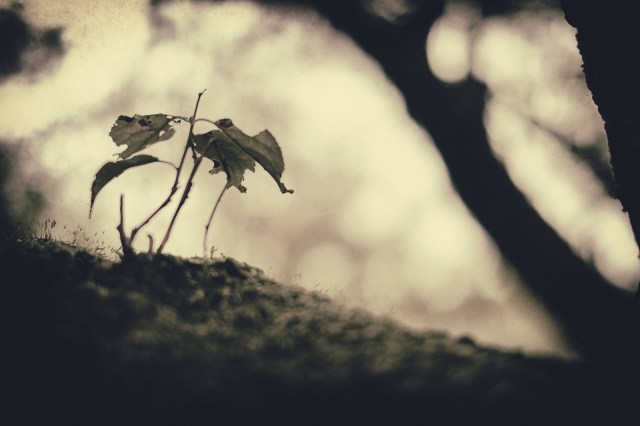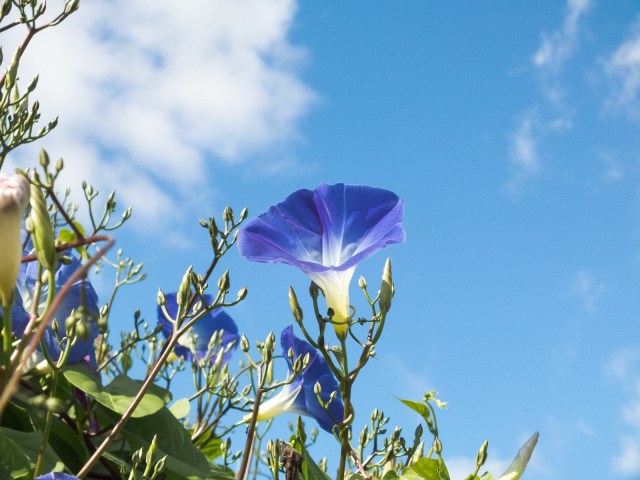Japanese students despair over the many, MANY ways you can describe a dead flower

Would a rose by any other name be as dead?
“I’m going to learn the Japanese language!” You announce to yourself, bright-eyed and determined, a fire in your heart and a world of knowledge ahead of you. You studiously pore over hiragana tables, then drill each and every katakana into your head. You learn that Japanese is structured differently from English, that the verb tends to come after the subject and object rather than between them. You tackle a mountain of kanji. Maybe you even find some friends to talk in Japanese with and learn the ebbs and flows of conversation.
Feeling good about yourself, you gesture to a vase filled with ailing morning glories. “Asagao ga kareta.” The morning glories have withered. Right?
…Right?
Wrong! When you address morning glories, or asagao, the correct term to use is shibomu. It also means “to wither”, but has a shriveling, deflating nuance to it.
▼ Here’s a fully blooming morning glory to make you feel better.

As with many aspects of the Japanese language, many native speakers will be far too polite to correct you on the finer points of funereal flower terminology, especially as kareru (the catch-all verb for “wither” or “die” when applied to plants) makes perfect sense in context. But for perfectionists who wish to speak flawless, top-tier Japanese it’s yet another thorn in their side.
YouTuber Artur, who is Latvian but produces content primarily in Japanese, lamented the extent of his withering woes in the following tweet:
他の言語だと『花が枯れる』という表現はそんなに多くないと思うんだけど、日本語の『花が枯れるの表現多すぎ問題』に直面してラトビア人泣いてる。
— アルトゥル
桜⇒散る
梅⇒こぼれる
椿⇒落ちる
朝顔⇒しぼむ
菊⇒舞う
牡丹⇒崩れる
ま…待ってくれ…
日本人のみんな…
そなた達の語彙力は底なし沼か?日本推しYouTuber
(@ArturGalata) March 12, 2021
“I feel that other languages don’t have anywhere near as many ways to say the phrase ‘the flower has died’, but the conundrum of having far too many ways to say ‘the flower has died’ in Japanese would reduce a Latvian native to tears.
Cherry blossom ⇒ chiru (falls)
Plum blossom ⇒ koboreru (spills)
Common camellia ⇒ ochiru (drops)
Morning glory ⇒ shibomu (shrivels)
Chrysanthemum ⇒ mau (flutters)
Tree peony ⇒ kuzureru (crumbles)S…Stop, please…
Japanese people…
Is the ravine of your vocabularies truly this bottomless…?”
Each of the verbs listed above—chiru, koboreru, ochiru, shibomu, mau, kuzureru—technically means “to die” in the context of its given flower. In Japanese, just as much importance is given to when a flower shuffles off the mortal coil as to when it blooms, which is why these dying words are so incredibly descriptive—while a cherry blossom falls in death, you wouldn’t describe the ground-rooted morning glory to “fall”. Instead it shrinks in on itself, loses its vivid color, and dies in a tight bundle, so the shriveling aspect of shibomu feels much more appropriate. Likewise, it just feels wrong to describe the fluttering free-fall of dead cherry blossoms as them shriveling.
Common camellia flowers drop dramatically in death, while plum blossoms—similar to cherry blossoms— will spill down from the branches in a shower. The fluttering of chrysanthemums refers to how their sheaves of delicate, willowy petals detach as the plant sickens. Lastly, the tree peony crumbles when it dies in every sense of the word. It loses its pallor, the petals disintegrate. This typically signifies that the branch it grew on needs to be pruned.
Artur apparently came across this unique quirk of language when studying up on the transient art of wabi-sabi; when he realized that blossoms can chiru but autumnal leaves will kareru, he was astounded by the depth and significance of the language involved.
▼ “Japan’s four seasons, especially spring and autumn, are full of wabi-sabi experiences.”
最近は【侘び寂び】を勉強しているのですが、花が散るや紅葉が枯れるなど本当に奥が深いなと驚いてるラトビア人です。
— アルトゥル
日本の四季、特に春と秋はワビサビを感じる事が多いですね。
【動画】わびさびに取り憑かれた外国人、その本性とは!?
https://t.co/l4Lxkov9I3 pic.twitter.com/4CbYr10rxn
日本推しYouTuber
(@ArturGalata) March 12, 2021
The sheer level of descriptive death verbs came as a shock to his many native Japanese fans, as well. The Twitter thread was filled with amusement at how many different terms there were, as well as respect for his determination to learn them all.
“I’m Japanese myself, but even I was astonished at the breadth of phrases. The Japanese language is deep, indeed…”
“Common camellias make a very meaty THUD when they fall, so in the warring Sengoku period, they were considered bad omens. The flower falling with a THUD… It sounds like a head, you know?”
“I don’t think every single Japanese person has these words for flowers dying in their vocabulary, but there sure are a lot.”
“I never knew the terms for plum blossom, chrysanthemum, and tree peony!”
Check out Artur’s YouTube channel for more passionate discoveries like this one, and we have a few things we can teach you, too!
Source: Twitter/@ArturGalata via My Game News Flash
Top image: Pakutaso
Insert image: Pakutaso
● Want to hear about SoraNews24’s latest articles as soon as they’re published? Follow us on Facebook and Twitter!
Credit:

0 comments:
Post a Comment